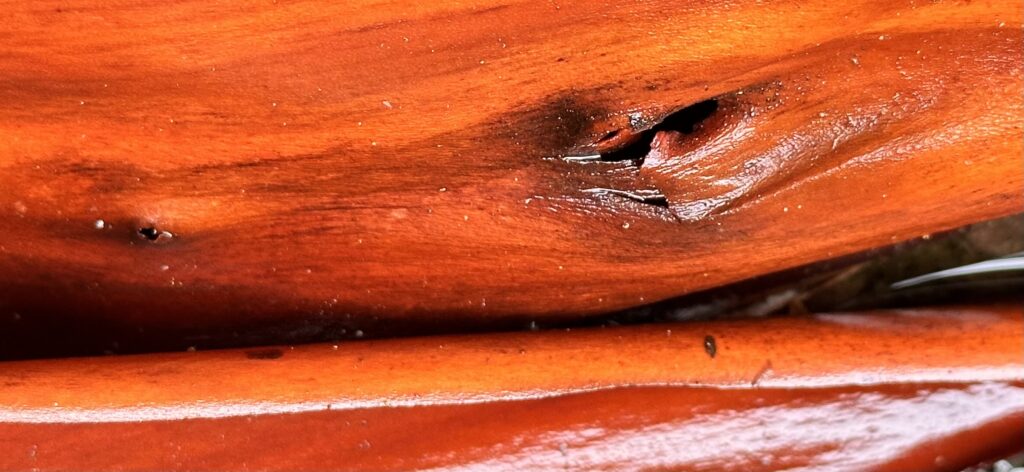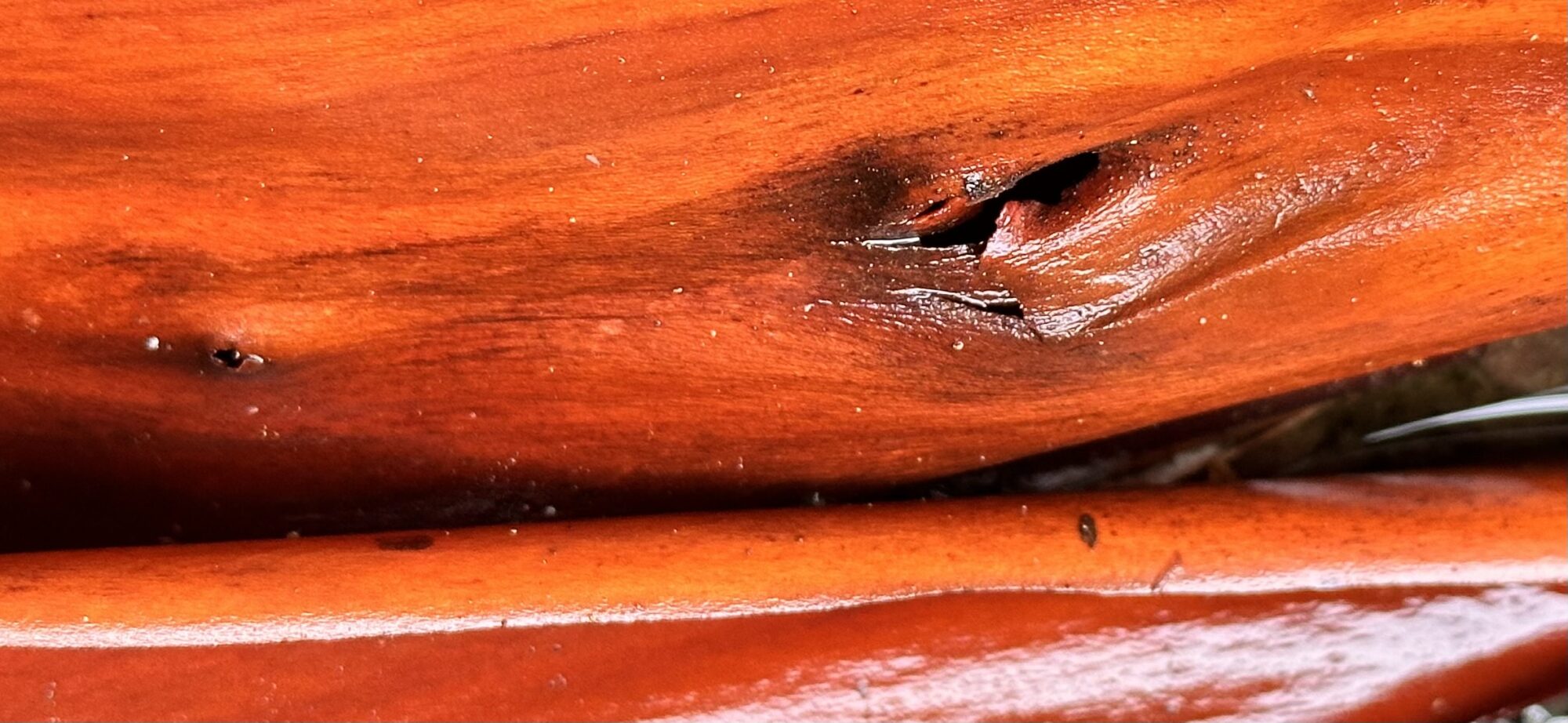- Visual Analysis
This macro photograph captures the vibrant and textured bark of an Arbutus tree. The fiery hues of orange and red dominate the frame, evoking the appearance of glowing embers. The peeling layers of bark, coupled with the dark crevice, create an intricate interplay of light, shadow, and texture. The natural sheen on the bark’s surface suggests moisture or sap, adding a dynamic, almost alive quality to the image. - Philosophical Reflection
The Arbutus tree, known for its peeling bark, symbolizes renewal and resilience. This image highlights the cyclical nature of shedding and regeneration. The vibrant, ember-like tones of the bark remind us of the interconnectedness of fire and life—how destruction often paves the way for growth. It invites viewers to ponder the hidden beauty in processes of transformation. - Practical Photography Insights
- Lighting: The natural light accentuates the bark’s glossy texture and enhances the warm, ember-like tones. A slightly diffused light could reduce glare while maintaining the vibrancy.
- Composition: The close-up framing focuses on the bark’s layers and crevice, creating a compelling visual narrative. Positioning the crevice off-center adds an element of asymmetry that enhances visual interest.
- Focus: A shallow depth of field could highlight specific textures or edges of the peeling bark while softening the background for a more ethereal effect.
- Post-Processing: Enhancing the saturation and clarity was likely instrumental in bringing out the vibrant tones and subtle textures, but a gentle vignette might draw further attention to the center of interest.
- Reflections
The Arbutus tree, with its distinctive bark, becomes a stunning subject in this image. The fiery colors and peeling textures highlight nature’s artistry and its ability to create patterns of compelling beauty. This photograph serves as a reminder that even a tree’s bark, often overlooked, holds stories of resilience, transformation, and life cycles.

